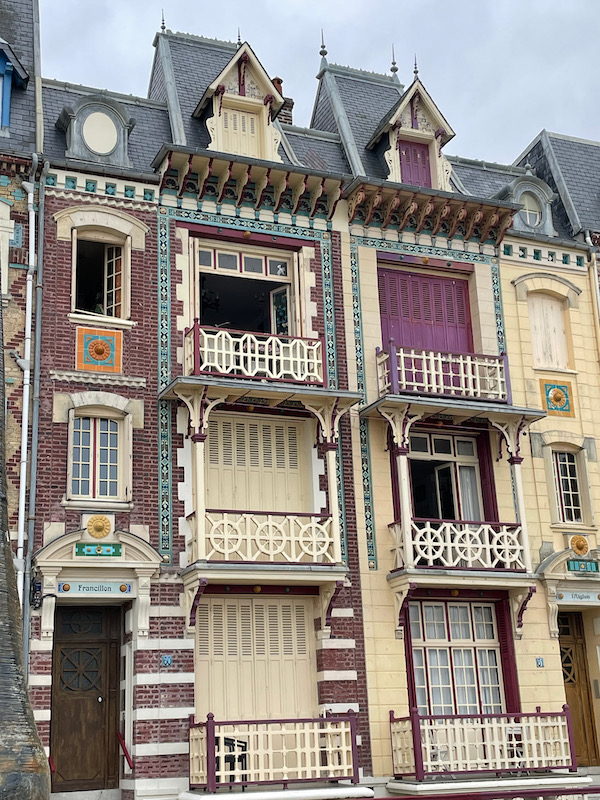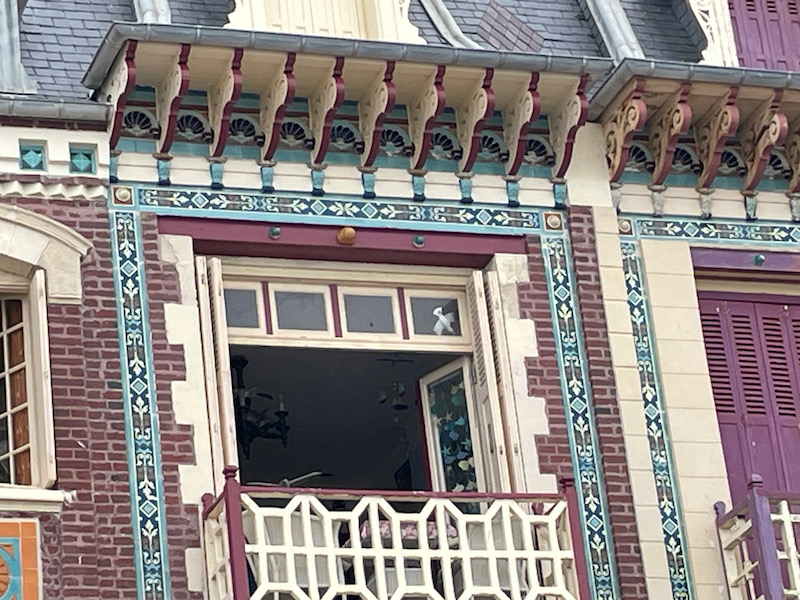Our Blog - Normandy 2023 - Mers-les-Bains, France
We weren't originally planning on going to Mers-les-Bains but, rather, to the town of Le Tréport, which is just next door. But as we walked around Le Tréport, it didn't seem like there was that much interesting so we packed up and drove to Mers-les-Bains. Before we left, we did grab a few pictures in e Tréport. There is large fishing port there, along Quai Francois 1st. The church up on the hill is Église Saint-Jacques, which dates from the 2nd half of the 16th century. We didn't walk up the 73 steps to get to the church :-) There is also an old green-and-white lighthouse that dates back to 1844.
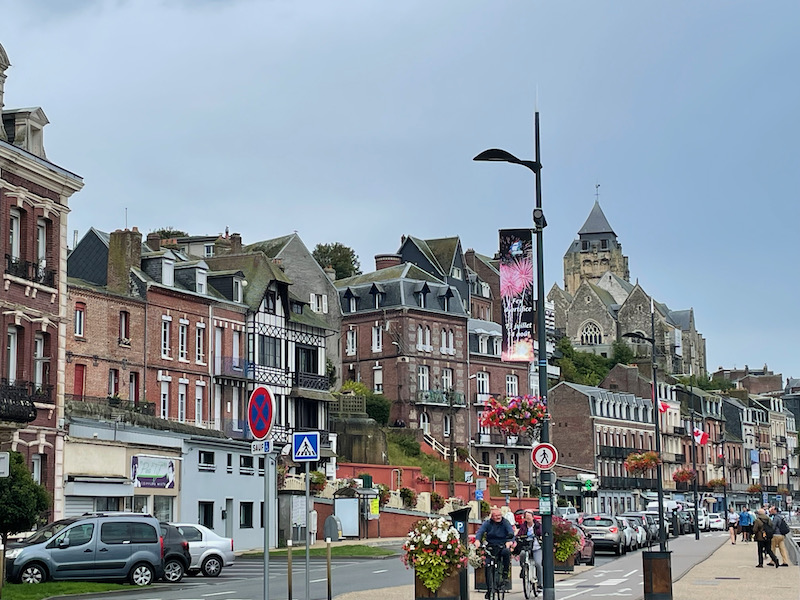
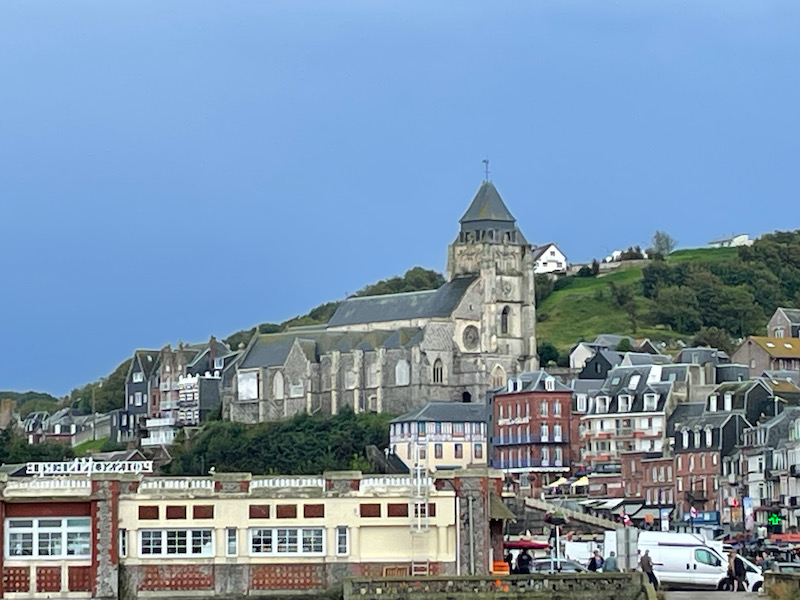

Here you can see the beach (which is mostly rocks and pebbles with very little sand), then a large casino, and then the tall, white chalk cliffs. If you look on the left side, just over the blue-part of the casino, you can see 2 openings in the cliff. This is a funicular which originally ran from 1908 to 1941, and then was reopened in 2006. It connects the upper and lower districts of the city.
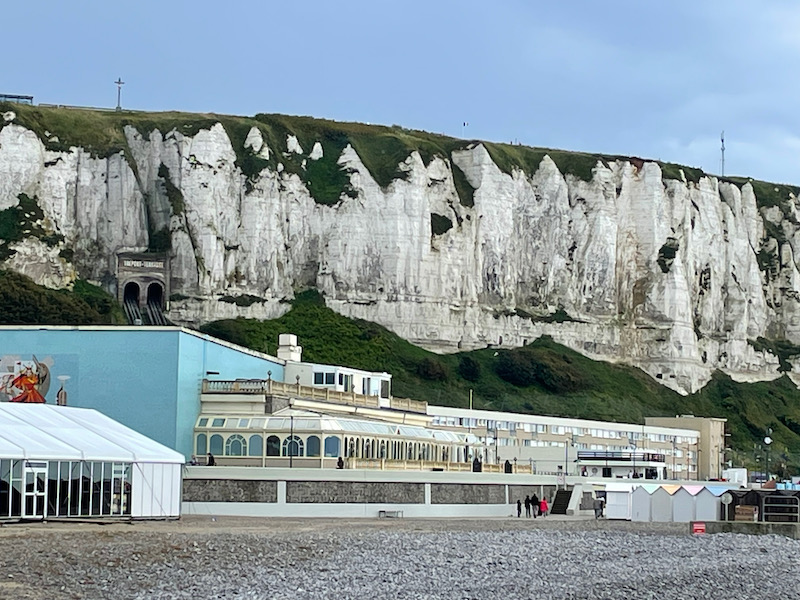
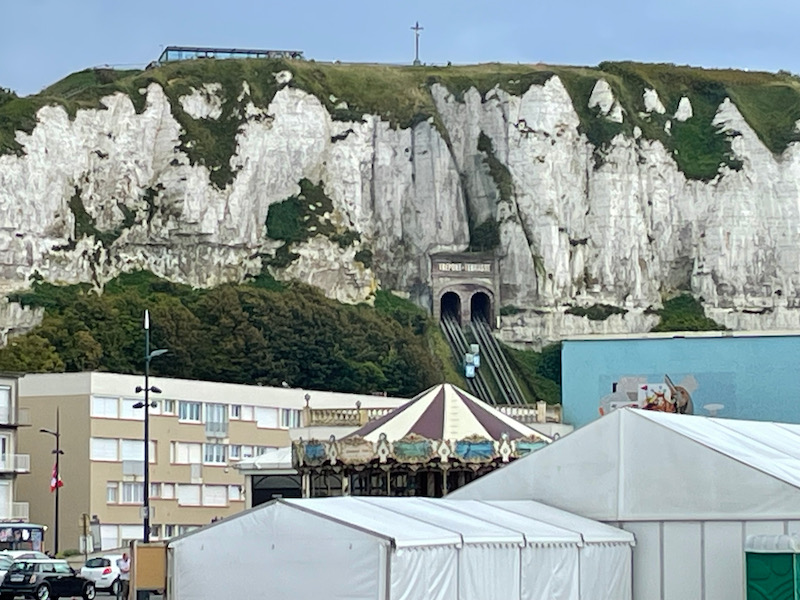
A nice look across the water from Le Tréport to Mers-les-Bains, with the tall cliffs of the Alabaster coast. I originally thought that there was a church on the top, called Notre-Dame-de-la-Falaise, but it is actually a very interesting statue (more on this later). I attempted to get a good picture looking down from the cliff to the shore but not sure if it truly captured it well.
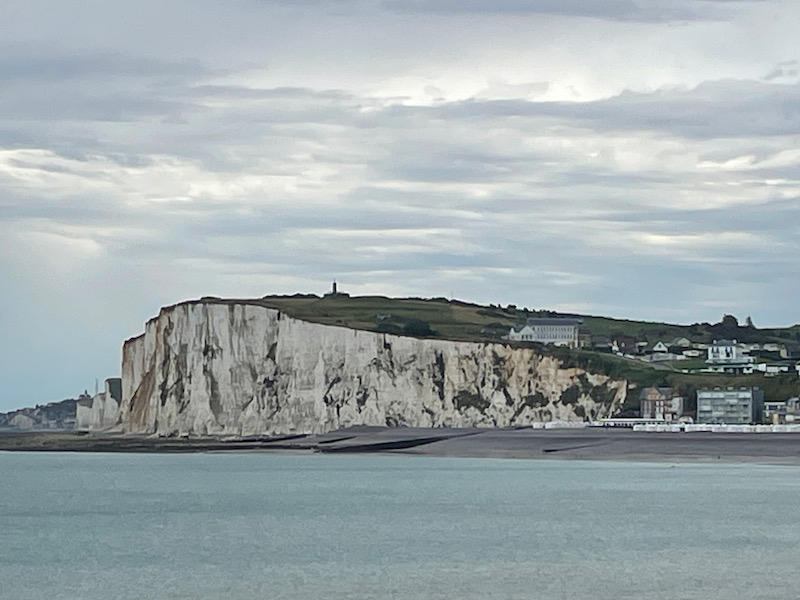
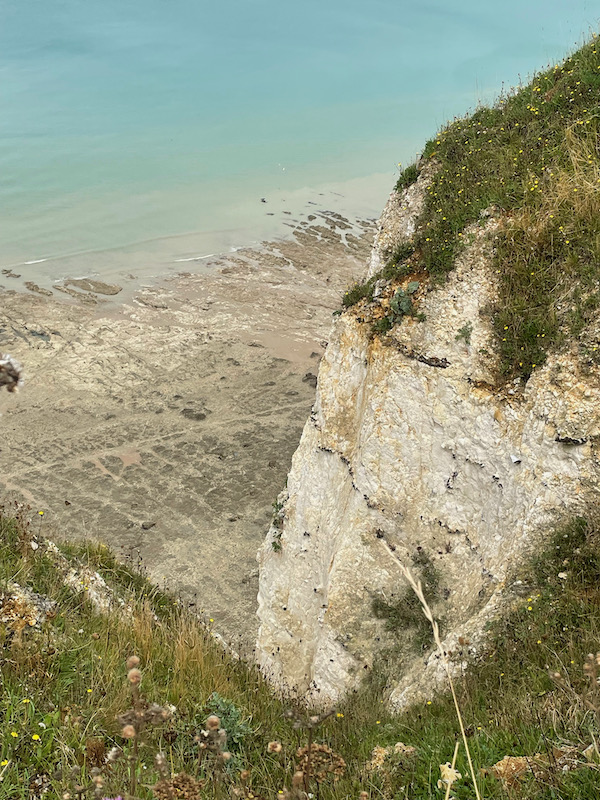
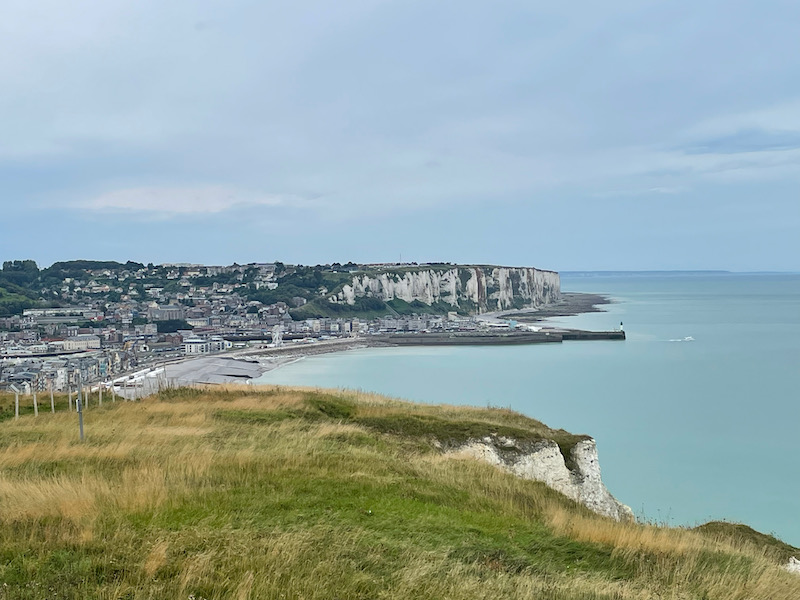
The statue Notre-Dame-de-la-Falaise represents the Virgin and Child crowned with a star and was inaugurated in 1878. It is oriented towards the sea, in order to protect sailors. Here is the interesting part. In 1942, during the German Occupation, it was taken down because it would an easy landmark for Allied planes. It was reinstalled in 1955 but with a slight twist. It was reinstalled on top fo a German blockhouse that was part of the Atlantic wall (which you can see in the last picture).
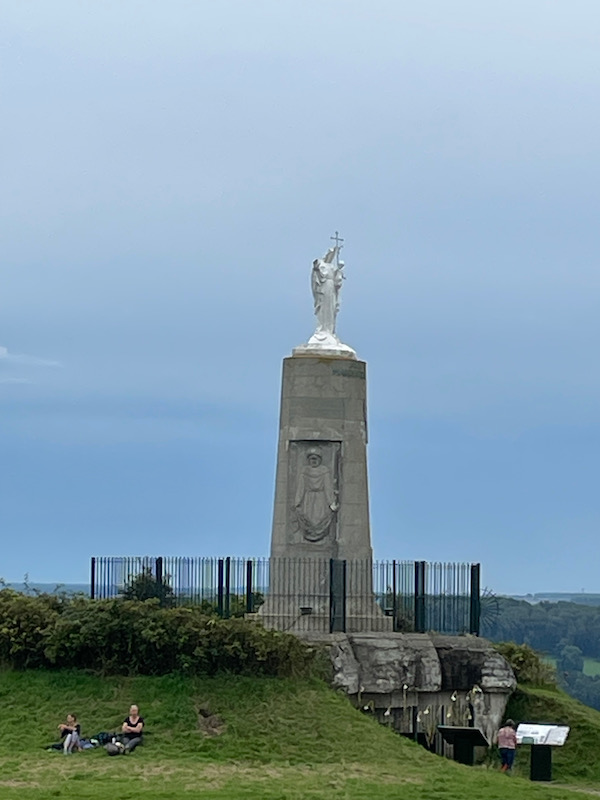
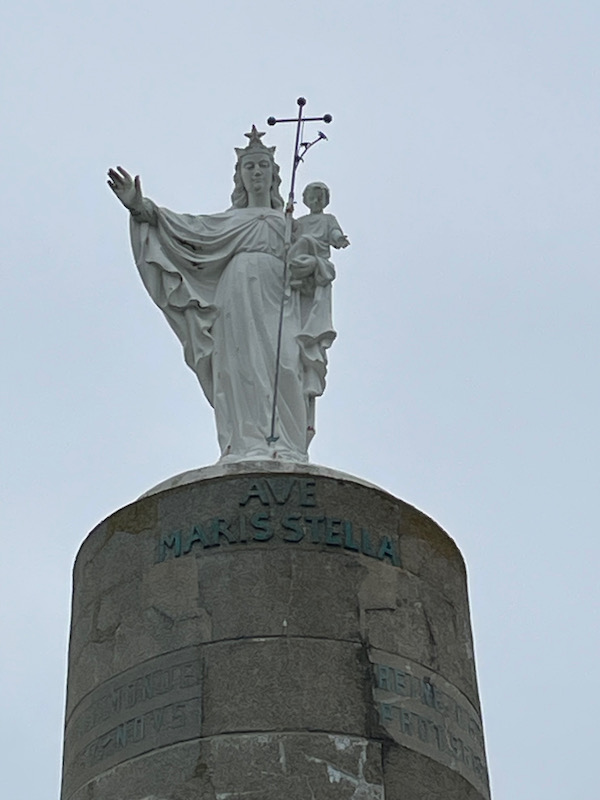
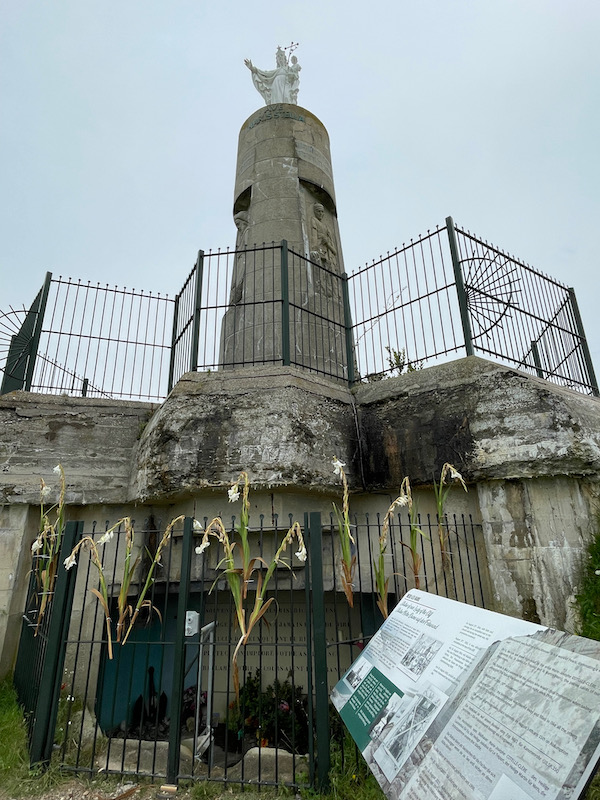
Then we headed back down to Mers-les-Bains, which was quite cute! It has interesting demographics ... the population has been steadily declining, from a high of over 4500 down to 2500 now. The population is relatively old with 46% of the population over age 60 while the it is only 26% for the department as a whole. About 50% of the homes are primary residences and 50% are secondary homes, which is fairly normal for a town that is truly a seaside resort.
In addition to tourism, there is a glassworks factory in town that is the world leader in making luxury bottles for perfumes. In addition to the beach, the seaside district is made up of more than 200 art-nouveau-style villas. The tourism office has a great little walking tour that focuses on these villas, and so that is what you will see.
Villa Jeannot, which housed the Post Office for many years, has green blazed brick decorations and very nice blue metalwork at the windows.
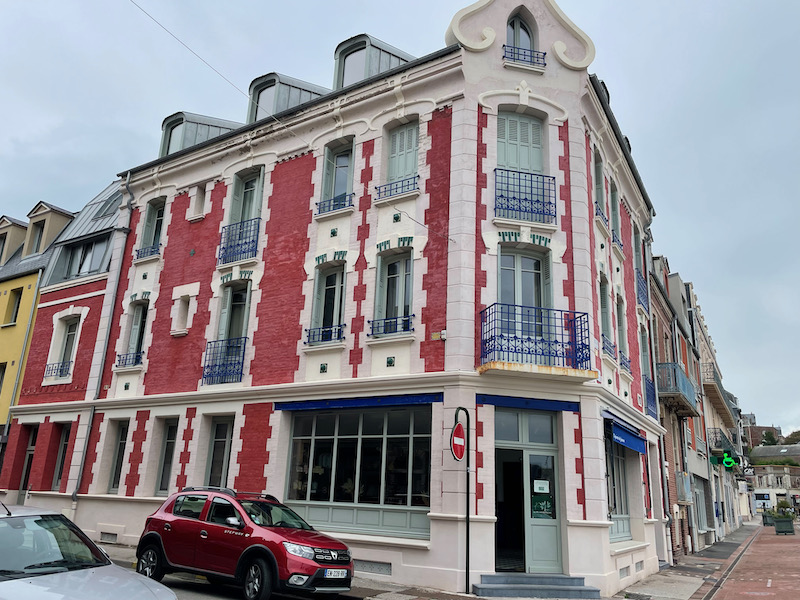
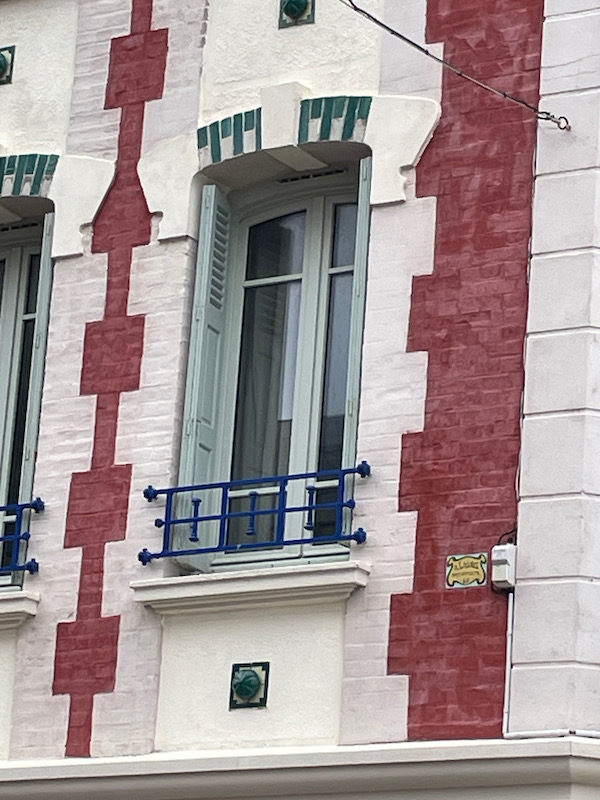
Here you will see one of the main features of many of these villas ... a small enclosed on "sunroom" on one of the upper floors. You can also see how colorful these villas are!
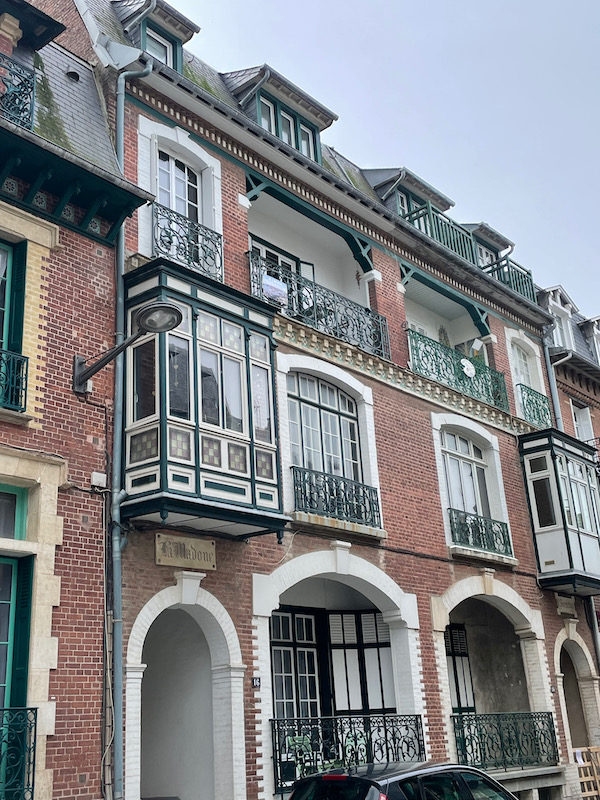
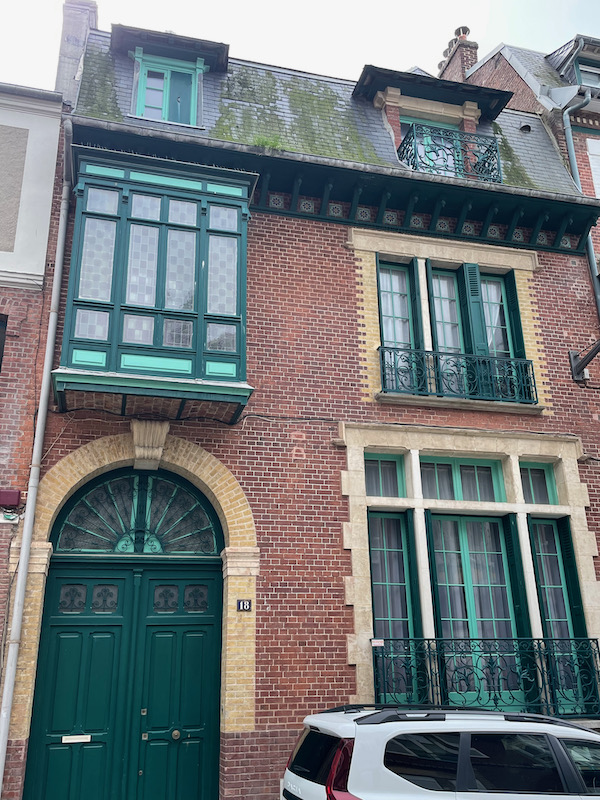
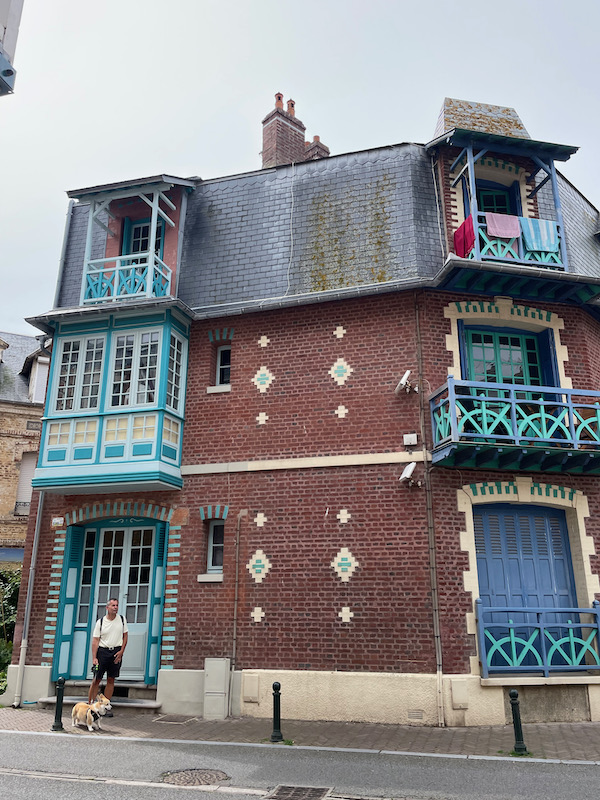
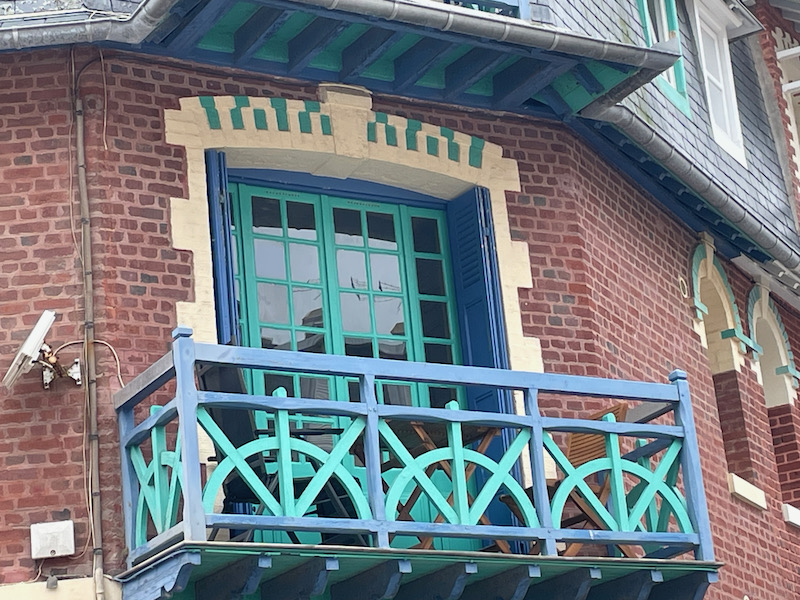
Villa Margharita has enameled tile decorations with flower motifs.
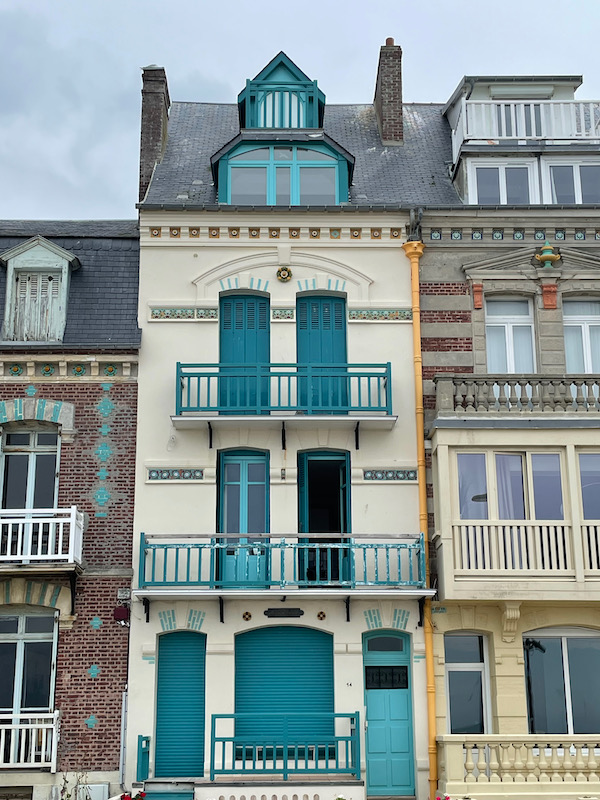
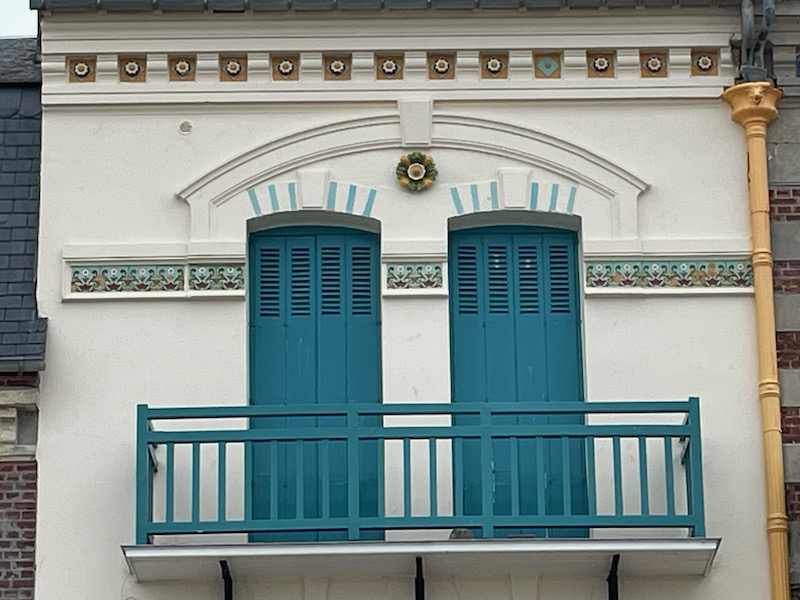
This set of villas are interesting. The basic form of the outer 2 are very similar as are the two inner ones (size and placement of windows and doors). The one on the right has a stepped-roof, which is typical of Flemish-architecture.
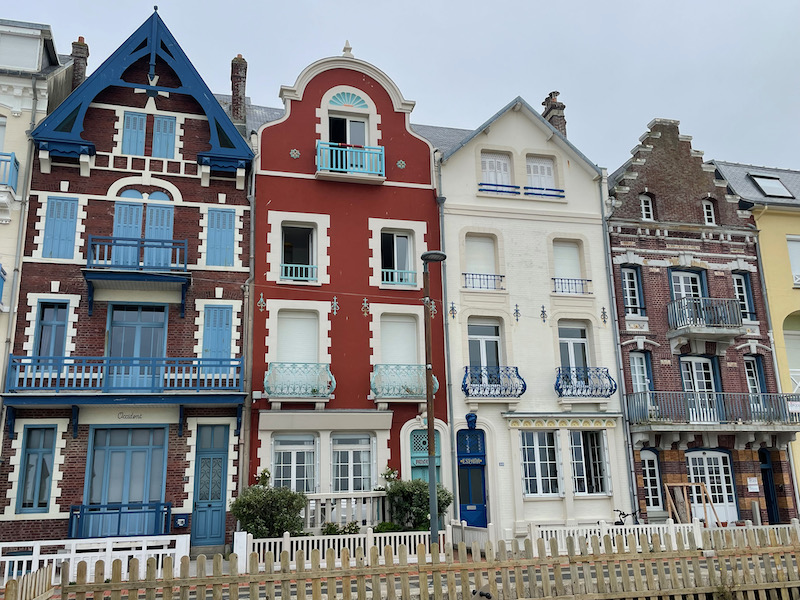
Another example of "twin" villas, but in different colors.

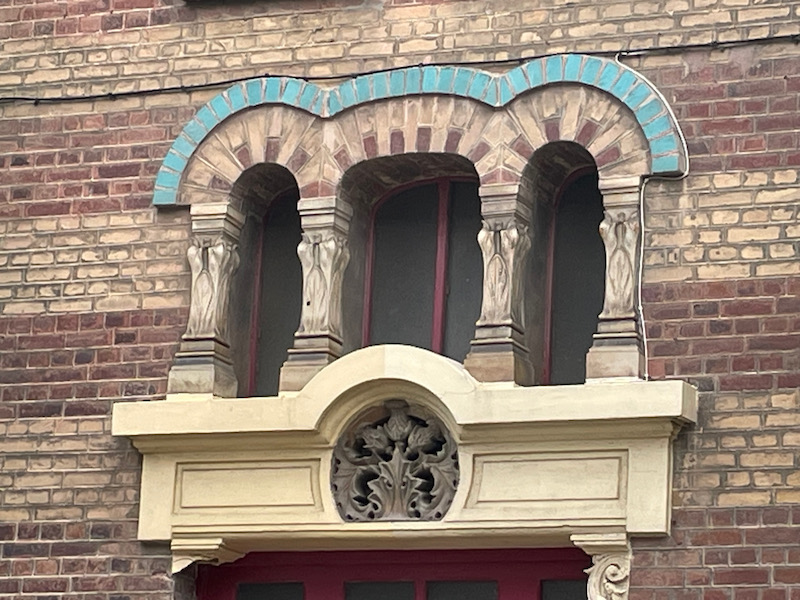
This is 3 villas within the same building (you can see two doors on this side and then another door around to the left). They have the typical small sunroom, but also Art-nouveau style ceramic decorations with flowers and the figure of a lady.
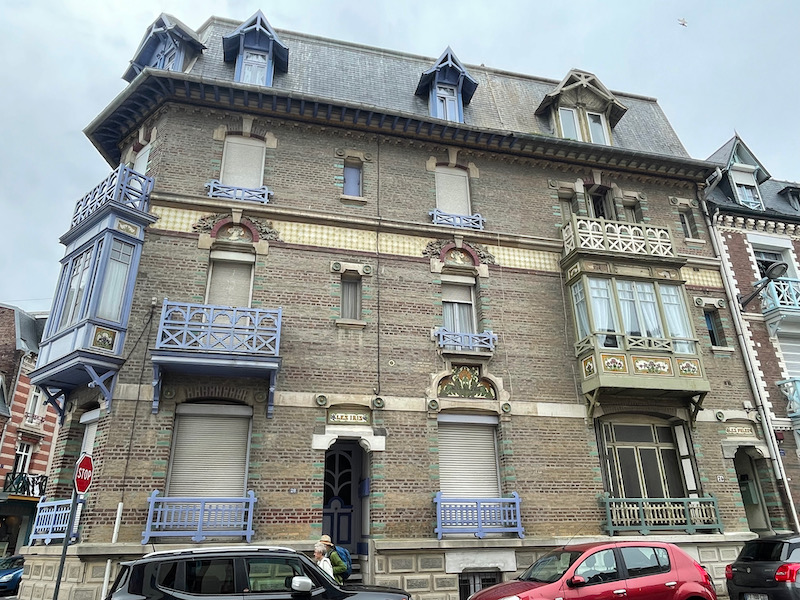
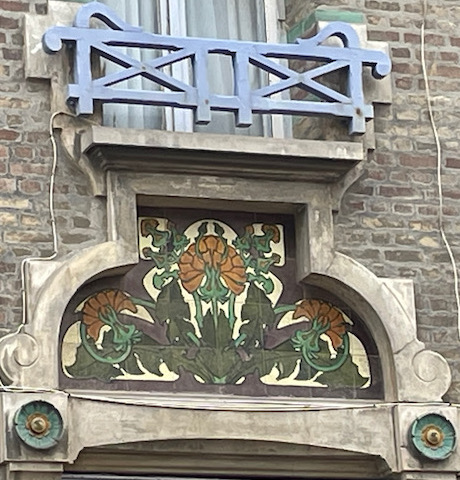
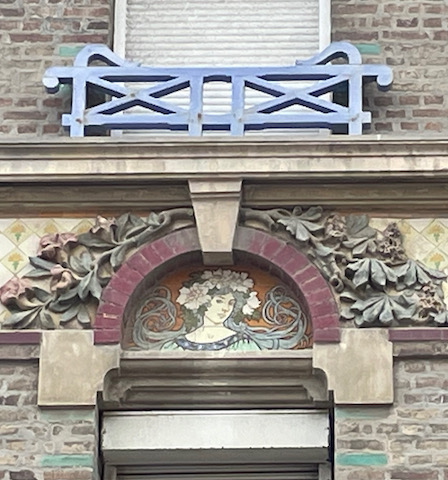
The twin villas of Yvonne and George, with an interesting roof with little turrets that looks like a medieval chateau.
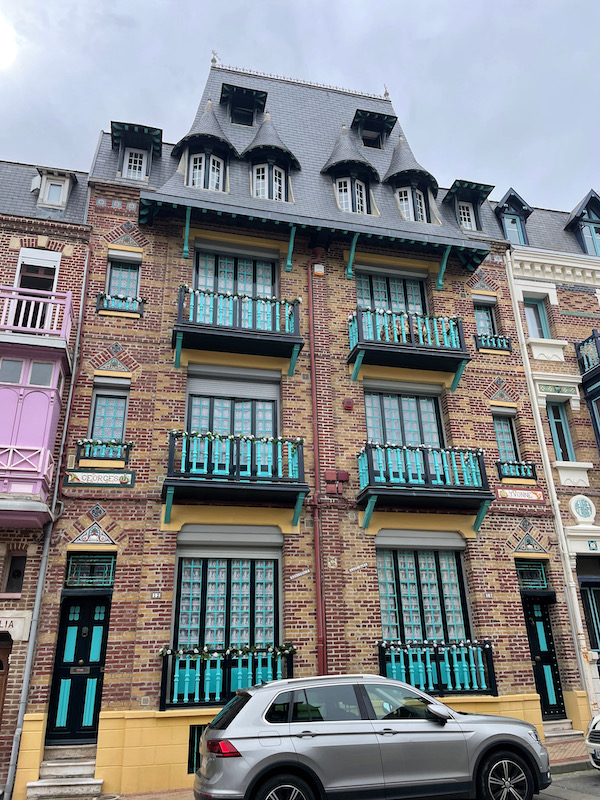
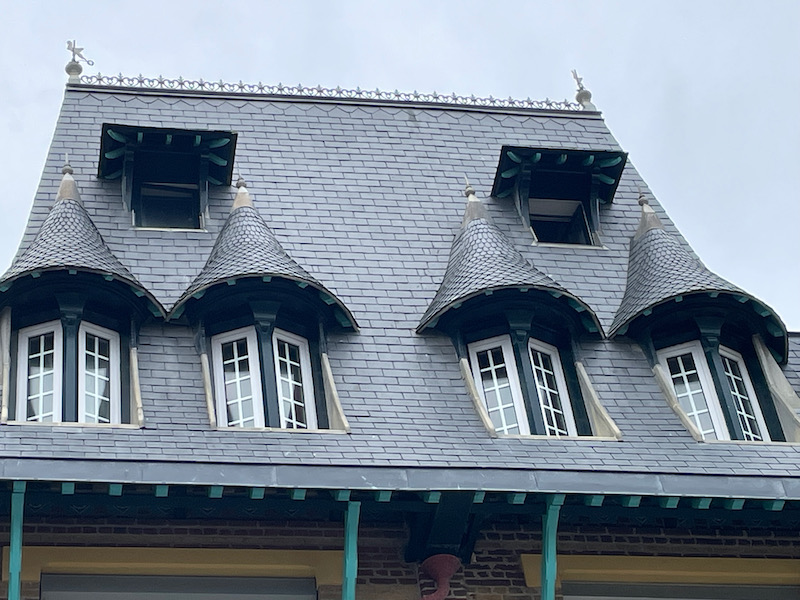
These last 2 twin villas have very nice carved woodwork underneath each of the small balconies, along with under the roofline.
